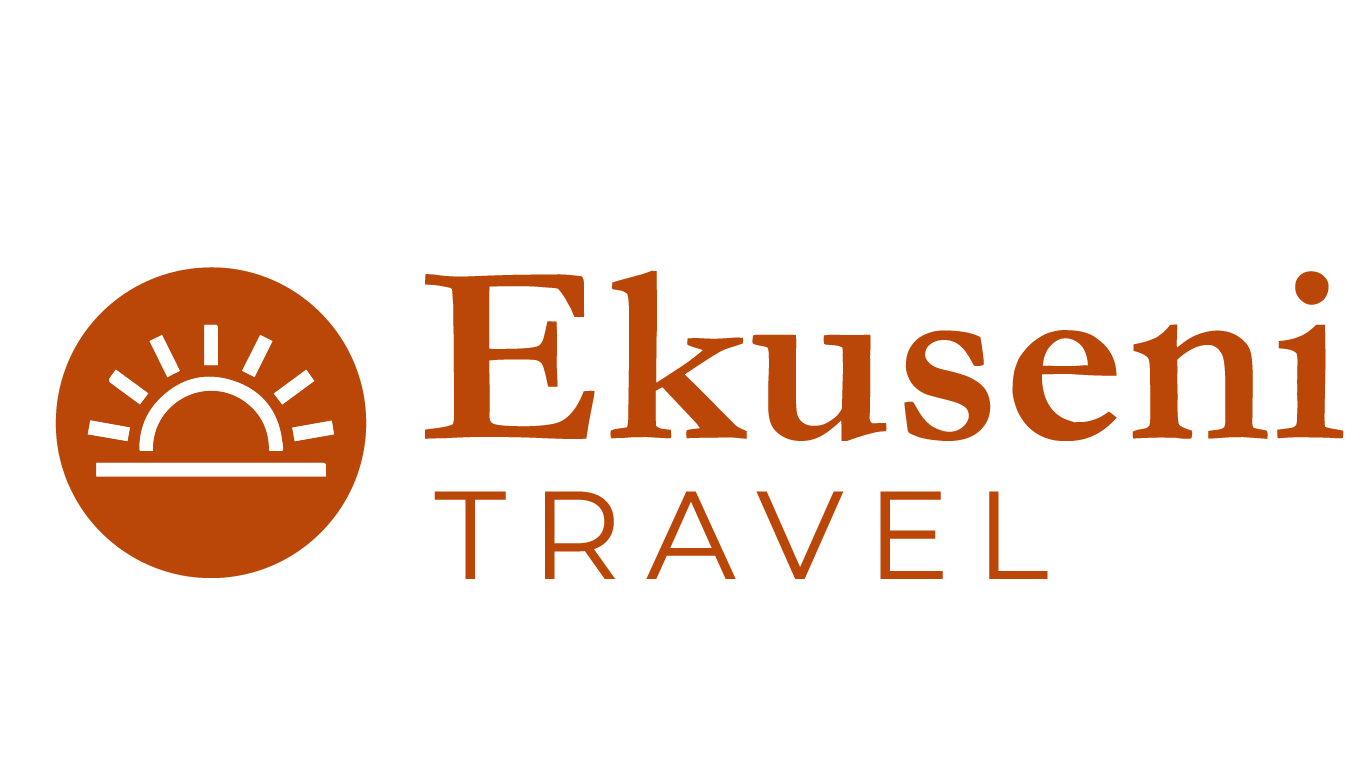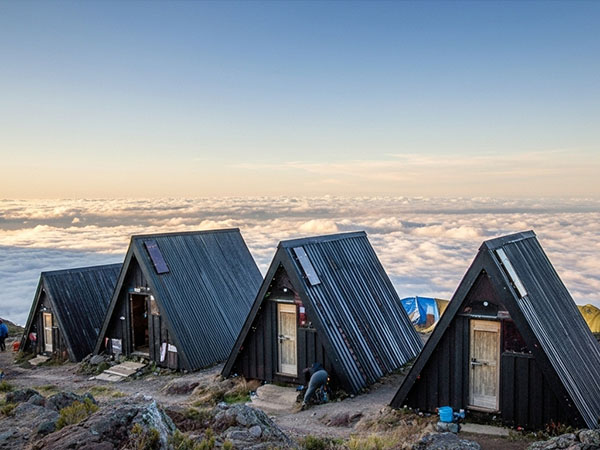How to Climb Kilimanjaro Safely and Successfully
The honest truth and the best plan for the Roof of Africa.
Look, everyone knows it’s tall (5,895 meters/ 19,341 feet). But here are a few things that actually make this mountain special, and why you should climb it:
The Secrets No One Tells You
You’re on the World’s Tallest Free-Standing Mountain. Think about that. Most big peaks are part of a giant range. Kili just erupts right out of the plains. From the top, you don’t see another range nearby; you just see the curvature of the Earth and the whole African landscape laid bare. It’s truly monumental.
The Pole Pole Mindset is Your Secret Weapon. You’ll hear the Swahili phrase “pole pole” (slowly, slowly) a thousand times. It’s not a cute saying; it’s the medical advice that saves your trip. Speeding up is your biggest enemy on Kili. Embrace the slow, deliberate pace. It’s a marathon, not a sprint, and your ego needs to stay at sea level.
Embrace the High-Altitude Thirst (and Bathroom Breaks). You have to drink a ridiculous amount of water: 3 to 4 liters a day. Why? It’s how your body manages altitude. The trade-off is constant bathroom breaks. Don’t fight it; hydrate like a boss, and don’t feel awkward about finding a rock. We include private toilet tents for a reason!
Kilimanjaro Climb Gallery
Kilimanjaro Climb Highlights
The Environmental Shock Wave: You move from the equator to the Arctic in less than a week. That means five radically different worlds: rainforest to glacier; everyday is a new beautiful project for your eyes and legs. You are witnessing a geological masterclass.
Optimized Safety: Our routes and pacing are meticulously chosen to maximize your time for acclimatization. We don’t mess around with rushed itineraries. We take the gamble out of the climb.
The Moment: Summiting before dawn to watch the sunrise above the clouds is a feeling of achievement that money can’t buy and a view no photo can capture.
The Team: Our local guides and crew are phenomenal. They are the engine of your success. Get to know them, their passion and expertise will be the most inspiring part of your journey.

Why We Insist on the Extra Days
The single most important decision for your trip is duration. If you want to climb Kilimanjaro safely and successfully, you need time. Period.
The Acclimatization Truth: Altitude sickness is the main reason people fail. The extra days on our 7 and 8-day routes are not luxury; they are medically sound necessity. They let your body produce the red blood cells needed to function high up.
The Non-Negotiable Buffer Days: When you see “8-Day Lemosho,” that means 8 days of walking. You must budget two extra days for your full trip: your Arrival Day (Day 1) to rest from the flight, prep gear, and meet the team in Moshi or Arusha, and your Departure Day. Don’t compromise your safety and trip investment for a few hours of rushed planning.
The Only 4 Route Worth Your Time
We’ve filtered the options down to the four best ways to climb Kilimanjaro safely and successfully.
Why It Wins: It’s the most scenic route, starting out west with genuinely stunning views across the Shira Plateau. Crucially, the 8-day version offers the absolute best acclimatization profile.
The Vibe: High success rate, low stress (for a mountain climb, anyway).
Best For: First-timers and anyone who wants the highest chance of summiting comfortably.
Why It Wins: Famous for a reason (it’s called the “Whiskey Route”). It uses the effective “climb high, sleep low” tactic which is great for your body’s adjustment.
The Vibe: Challenging, scenic, and rewarding camping trek.
Best For: Fit hikers who have some trekking experience and appreciate a classic, challenging ascent.
Why It Wins: It comes in from the north, meaning less crowd and a drier start. If you’re traveling during the less-than-perfect shoulder seasons, this is the smart choice.
The Vibe: Quiet, solitary, and a bit more unique.
Best For: Trekkers who prefer a more remote experience or are worried about rain.
Why It Wins: It’s the only route with basic communal huts (no tents!) and is generally the most budget-friendly.
The Climb: We only recommend the 6-day version because the 5-day option is too risky for acclimatization. It uses the same path up and down.
Best For: Budget-conscious travelers who prefer a roof over their heads and are comfortable with a less varied trail.
The Ultimate Weapon: The 9-Day Northern Circuit
This is the best route for success, period.
The 9-Day Northern Circuit route gives you the absolute maximum time and distance for altitude adjustment. It circles the quieter north side and offers incredible views.
Why don’t we lead with it?
Because it’s a 9-day trek, which demands a total of at least 11 days of your life (including the crucial Arrival and Departure buffer days). From our experience, very few people can allocate that much time to a single project.
If you have the time and you are completely non-negotiable on success, this is your path. But be honest with yourself about your schedule.
The Winning Window: When to Climb Kilimanjaro
You want the lowest risk, highest visibility window.
We focus on the dry seasons. But we have a secret weapon for the wet months.
The First Strike: January to Mid-March. This window is cold but generally clear. Visibility is fantastic, and you avoid the major holiday crowds. A prime, strategic time to hit the mountain.
The Main Assault: June to October. This is the longest and most popular dry stretch. The weather is stable and predictable, making summit night conditions the least brutal. This is your highest probability window.
The Rainy Season: Use the North Side
We highly recommend the Rongai during these periods. Why? It approaches from the North, the mountain’s rain shadow. This means it receives significantly less precipitation than the popular southern routes. While others are slogging through a monsoon in the rainforest, you’re on the drier path.
Don’t avoid the season, attack it with the right route, the Rongai route.
Your Anti Failure Kilimanjaro Climb Training
This isn’t generic advice. This is the training that separates summit success from altitude failure.
Hike with Your Boots and Pack. Now. Do not buy new boots and show up. Break them in over hundreds of miles. Do your training hikes wearing the day-pack weight you will carry on Kilimanjaro. The goal is to make your boots an extension of your body, eliminating blisters (a trip killer).
Endurance is Everything. Not Speed. Forget sprints. Focus on long, slow, back-to-back days on trails. Train your heart and lungs for relentless, steady effort. The longest day of your training should be 6-8 hours, not 2.
Harden Your Mind. The final push on summit night is a pure mental war fought in the dark and the cold. Start working on your mental resilience now. When your body wants to stop, your mind has to be ready to tell it SHUT IT DOWN and take the next slow step (pole pole).
What's Included and Excluded?
This is the non-negotiable list of what we include to ensure your successful summit, and the few items we expect you to handle yourself.
Price Includes
All Fees: Every park, conservation, and camping/hut fee is covered. No surprises.
Your Team: Certified, English-speaking guides, assistant guides, cooks, and porters. They are the best in the business.
Safety Kit: We carry the emergency oxygen, comprehensive medical kits, and constantly monitor you with pulse oximeters.
Ground Game: Private, scheduled road transfers between your Moshi/Arusha hotel and the park gate. (We handle all the driving logistics; we don’t offer self-drive.)
Accommodation: All camping equipment (or huts on Marangu) plus your welcoming hotel stay in Moshi/Arusha on the Arrival and Departure days.
- Hygiene & Comfort: Private, dedicated mess tent, and your own portable flush toilet at every camp.
Price Excludes
International flights and Tanzanian visa fees.
Personal climbing gear (boots, specialized sleeping bag, etc. we can arrange high-quality rentals though!).
Tips for the crew (absolutely necessary and encouraged).
Travel Insurance (Mandatory for all Ekuseni guests).
Stop Wasting Time, Start Summiting
If you are tired of corporate travel agents selling you a compromised dream, and you want to leverage local expertise for the highest possible success rate on Kilimanjaro…
Frequently Asked Questions (FAQs)
Is Climbing Kilimanjaro Dangerous?
It is a serious high-altitude trek, not a walk in the park. The danger isn’t the mountain; it’s rushed itineraries. We insist on 7 to 9 days to maximize acclimatization, which is the single biggest factor in mitigating risk. When you prioritize time, the risk drops dramatically.
Do I need to be a mountain climber to reach the summit?
Absolutely not. Kilimanjaro is a hike, not a technical climb. You need strong endurance, relentless willpower, and high-quality gear. No ropes or technical mountaineering skills are required, but you must take your physical conditioning seriously.
How much does it cost to climb Kilimanjaro?
The cost is an investment in access, safety, and infrastructure. We focus on the mid-range to high-end market because cheap climbs cut corners on food, gear, and, most importantly, guide/porter welfare, which puts your safety at risk. The final price depends on your chosen route and duration.
How do I choose the best route for my first climb?
The 8-Day Lemosho is the undisputed champion for first-timers. It offers the best scenic value and the ideal ascent profile for your body to adapt. If you have the time (at least 11 days total), the 9-Day Northern Circuit offers the ultimate success path.
What is the most important item I need to bring?
Your worn-in boots. You must spend months breaking them in before you arrive. Blisters are the number one non-altitude issue that kills a climb. Also, bring the mental toughness to SHUT DOWN fear and need to stop on summit night.
What are the best months to climb Kilimanjaro?
The dry seasons: January to Mid-March and June to October. These windows offer the most predictable weather and the highest chance of clear summit views. If you are restricted to the rainy seasons, the Rongai Route is your strategic choice for the drier north side.
Why do I need a full "buffer day" before and after the climb?
You need your Arrival Day (Day 1) to rest, meet the team, and sort out your gear without rushing. We build in this flexibility because starting a high-altitude trek immediately after international travel is a major rookie mistake that compromises your body’s ability to adapt.
Can I rent gear from Ekuseni?
Yes, absolutely. We can arrange high-quality rentals for critical items like specialized four-season sleeping bags, trekking poles, and warm outer layers. Don’t compromise quality, but feel free to rent the bulky items to save on luggage weight.
What happens if I get altitude sickness and can't continue?
If you or a member of your group develops severe Acute Mountain Sickness (AMS), the protocol is immediate descent. Our guides are trained experts; they carry emergency oxygen and will not hesitate to escort you down. This is why you must have mandatory travel insurance that covers emergency medical evacuation. We focus on prevention, but we have the infrastructure to manage the risk.
Can I combine the Kilimanjaro climb with a Safari?
That’s the ultimate African adventure, and we specialize in linking these logistics. We connect your successful climb in Tanzania with a world-class wildlife Safari in Tanzania or Kenya, using comfortable road transfers to handle all the ground movement seamlessly.





